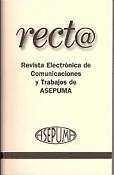Análisis de reputación empresarial y de engagement en Instagram: Una mirada comparativa a través de rankings
DOI:
https://doi.org/10.24310/recta.24.1.2023.19861Palabras clave:
Ranking, TOPSIS, reputación empresarial, engagement, InstagramResumen
En la actual era digital, la reputación empresarial y las redes sociales están estrechamente ligadas, ya que estas últimas han transformado la manera en que las empresas interactúan con sus clientes y, consecuentemente, la forma en que son percibidas. Esta investigación compara el ranking de las empresas con mejor reputación en España generado por Merco (Monitor Empresarial de Reputación Corporativa) con un ranking de engagement en Instagram, de realización propia, obtenido a través del método multicriterio TOPSIS (Technique for Order of Preference by Similarity to Ideal Solution). Los resultados indican que las redes sociales son cada vez más importantes y una mala gestión de las mismas puede tener un efecto multiplicador negativo en la reputación de la empresa, si bien lo contrario no es necesariamente cierto. Por otro lado, se muestra una disparidad del grado de engagement entre empresas directamente relacionadas con la tecnología y el resto. Se discuten las implicaciones teóricas y prácticas de estos resultados.
Publicación Facts
Perfil de revisores N/D
Información adicional autores
Indexado: {$indexList}
-
Indexado en
- Sociedad Académica/Grupo
- N/D
- Editora:
- UMA Editorial. Universidad de Málaga
Descargas
Publicado
Cómo citar
Número
Sección
Licencia

Esta obra está bajo una licencia internacional Creative Commons Atribución-NoComercial 4.0.






